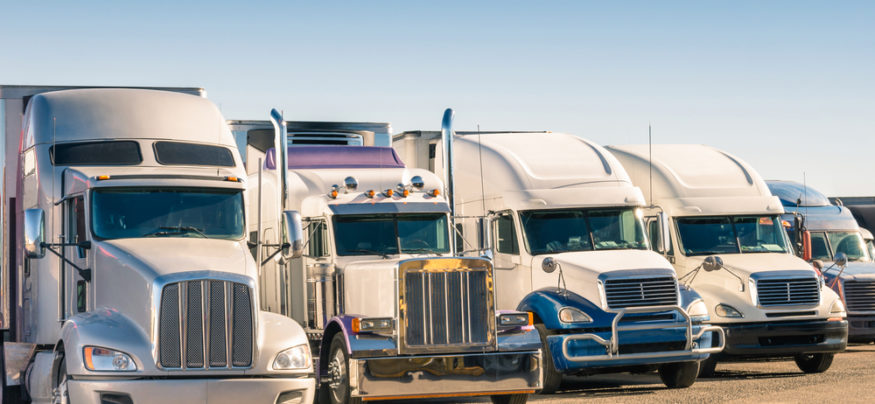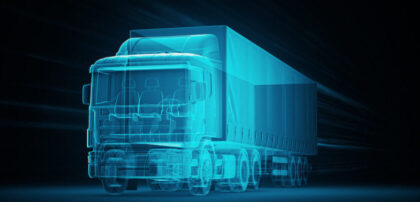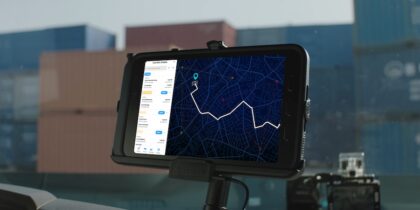Facing a multitude of challenges such as driver shortages, uncertain fuel costs and strict DOT requirements, trucking companies are looking for ways to streamline internal processes and regulation compliance to boost operational efficiency. The trucking industry is massive. In 2014, 3.4 million heavy truck drivers in the United States shipped 9.96 billion tons, accounting for 68.8 percent of domestic freight, according to the American Trucking Associations (ATA). With so much on the line, productivity losses due to improper paperwork or driver fatigue can be extremely costly.
Truck drivers involved in North American shipping not only need to make their deliveries and pickups on time, but also they must remain in-line with Department of Transportation (DOT) requirements and regulations from the Federal Motor Carrier Safety Administration (FMCSA), the federal agencies charged with overseeing motor carrier operations and safety. The FMCSA recently adopted a new regulation that requires drivers to use electronic logging devices (ELDs) in trucks and bus cabs.
DOT Requirements Drive ELD Adoption
One of the most well known DOT regulations is the “Hours of Service” rule, which requires drivers of commercial motor vehicles, such as heavy trucks and buses that weigh 10,001 pounds or more, to observe the hours of service requirements. While these vary by the type of vehicle, it is necessary for all drivers that haul property to take 10 consecutive hours off after driving a maximum of 11 hours. Drivers transporting passengers may drive a maximum of 10 hours after taking 8 hours off in a row.

Another necessary task for drivers is to keep a log of their daily activities in 15-minute increments over a 24-hour period. For years, drivers kept paper logbooks that were inspected at weigh stations or by carrier enforcement agencies. Drivers that failed to fill out their logbooks in accordance with regulations faced fines and even prosecution. Paper logbooks, however, were cumbersome and overly reliant on the trucker’s memory. Recent electronic alternatives have not only revolutionized the industry, but they have simplified the work for truckers.
The Evolution of ELDs
Electronic logging devices came into existence in the late-1980s, but early models were proprietary, single-purpose devices hardwired to the truck. With today’s mobile technology, ELDs can support several functions such as logging hours, communicating with dispatch, recording inspections and navigating based on optimized routes, while still having the option to be removed from the truck for entertainment.
Drive Fleet Efficiencies, Compliance and Retention
Learn how fleets have come to rely on mobile solutions to streamline internal processes and operations. Download Now
Tom Bray, senior editor for J.J. Keller & Associates, a trucking industry regulatory information and services publisher, explained that the early electronic options weren’t popular with trucking companies, but the more advanced tablets have a more positive reputation. “Not many trucking companies put devices in the cab when they were just a log,” says Bray. “But now the mobile devices can also be a communication system, a routing system and a fuel-optimization system. Some companies have brought them into trucks voluntarily not because of the ELD but because of everything else that comes with it.”
Some trucking companies have already adopted ELDs, many using Samsung rugged tablets for communication, navigation and training delivery, as well to improve operations and rules compliance. Early statistics show that the ELDs can dramatically reduce hours of service violations related to record keeping from what Bray calls “nuisance violations,” such as not signing the book or putting the wrong state with the city. “Those nuisance violations all but go away thanks to ELDs, and the driver pays less fines out of his pocket and the company has less worries,” says Bray.
ELDs Deliver Operational Benefits
Digital precision from ELDs also drives operational benefits that truckers and carriers may not think about at first. Bray noted the simple act of dispatching a driver becomes more disciplined because both the driver and dispatcher have access to the same information about the driver’s hours of service. So drivers aren’t left with hours to work but nothing to do, or in the middle of a run but unable to finish the job. “All of those mistakes go away when you switch to an electronic system,” says Bray. “Management becomes more conscious about what they’re doing in the back office, and the visibility allows them to plan in advance rather than react after the fact. The company can use the visibility to make sure drivers are used effectively and efficiently.”
Mobile ELDs make trucking more efficient by creating a two-way communication channel between the driver and the enterprise, whereby route information and truck maintenance issues can be reported. According to Bray, “There are lots of things that can be done with a tablet that can’t be done with something that’s hardwired into the cab. You can send the driver orders and updates, and he can send back information as well, and the device can even be used for inspections and navigational purposes.” Mobile devices are favorites for truckers and trucking companies because of its ability to handle web-based and app-based content, while being easy to use.
See what connected fleet solutions are available to help you meet company and driver needs.









